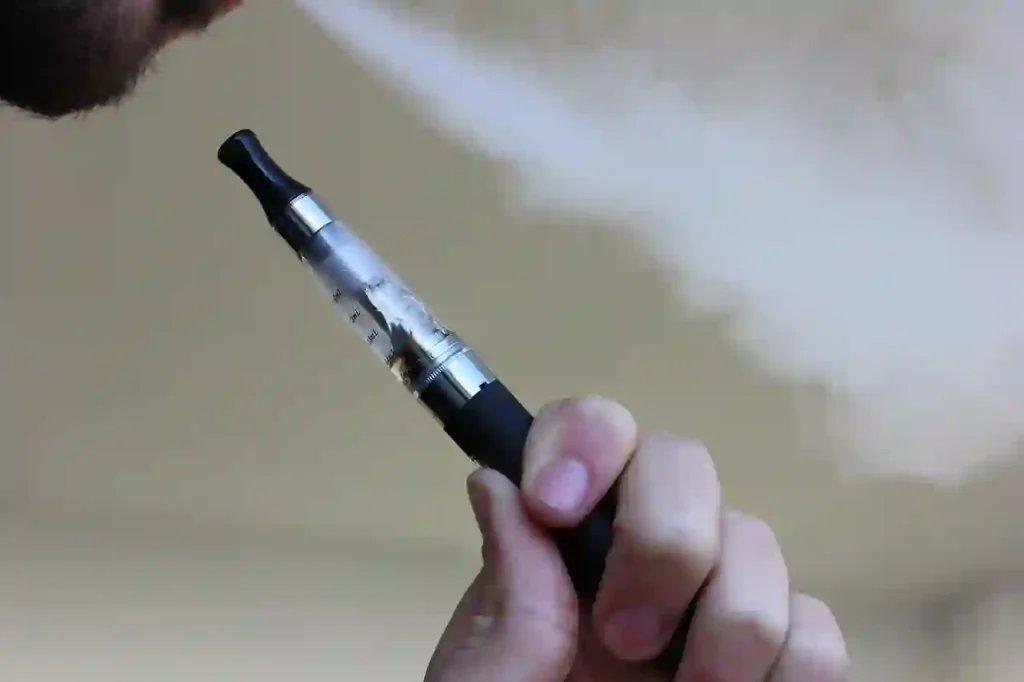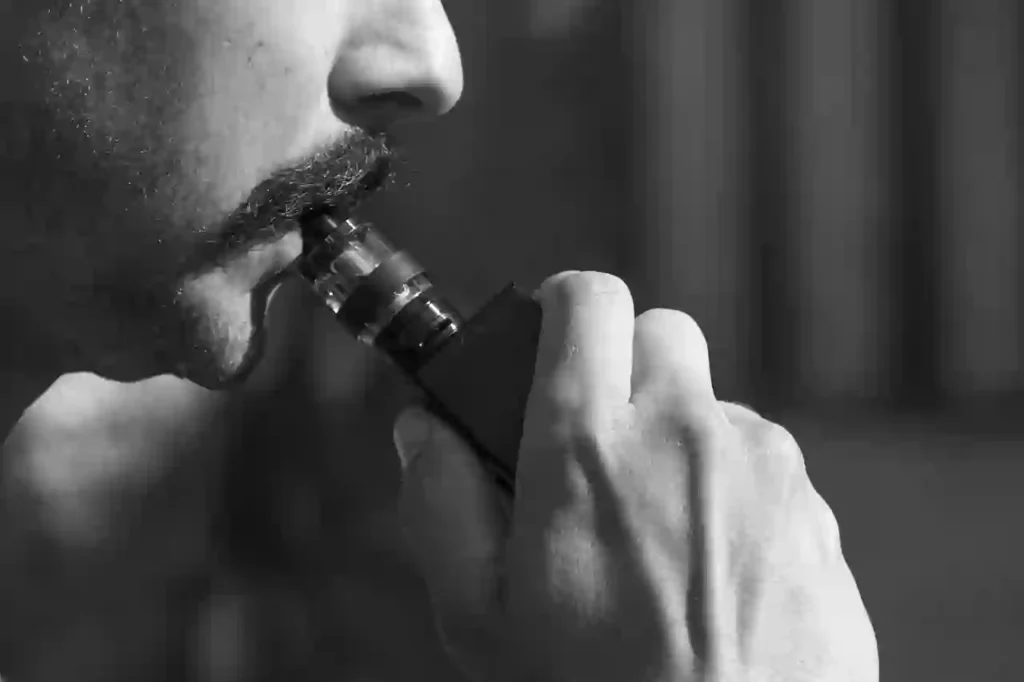Introduction: The Rise of Vaping and Growing Health Concerns

Young people all over the world have been drawn to vaping which is advertised as a safer way to smoke. Even so, studies are now uncovering that vaping can be damaging to your health. Now we will see Is Vaping Killing Us Slowly?
Table of Contents
What Is Vaping and Why Is It So Popular?
Vaping means breathing in aerosol from a liquid that has nicotine, flavorings and various chemicals, once heated. Because of stylish e-cigarettes, charming flavors and advertising aimed at them, its popularity went way up among teens. A lot of people view vaping safely, even though it can be both addictive and unsafe for their health. Considering how common it is now, especially with social media trends, teens think it looks “cool.” Still, being popular doesn’t make a place less dangerous. While there are new fancy things about vaping, its health risks for those who vape for a long time are major.
Chemicals in Vape Juice: What Are You Inhaling?
A vape juice blend goes beyond flavor, also including chemicals. Usually, you’ll find nicotine, propylene glycol, vegetable glycerin and artificial flavorings in e-liquids. When they get hot, these materials may emit dangerous materials like formaldehyde and acrolein. A number of research studies have found lead and tin residue in the coils from vapes. Certain harmful chemicals can trigger lung irritation, damage DNA and help cause severe health problems. While cigarettes are regulated, vape chemicals usually have no rules and may cause users to inhale dozens of dangerous byproducts with every breath.
The Hidden Impact of Vaping on Lung Health
Vaping products do not create smoke, but they can still hurt your lungs. The use of an aerosol can cause the lungs to become inflamed, lower their function and possibly result in ‘popcorn lung’ (bronchiolitis obliterans). Reports show that EVALI (e-cigarette or vaping use-associated lung injury) can lead to major breathing complications in healthy young vapers. Long-term smokers may always cough, hear wheezing and have trouble breathing normally. Compared to smoking-related diseases that creep up slowly, injuries caused by vaping can develop suddenly and seriously to show that saying vaping is safer is not the same as saying it is safe.
How Vaping Affects the Heart and Blood Vessels

One of the main things in e-cigarettes, nicotine, can quickly make your heart beat faster and your blood pressure rise. As a result, blood vessels close up, making it harder for the heart to get needed oxygen. With continued effect, this can eventually cause higher blood pressure, arrhythmias and a greater risk of having a heart attack. In addition, vaping chemicals can lead to oxidative stress which may harm the protective layer of your arteries and increase your chance of atherosclerosis. Taking the drug briefly causes changes in your blood vessels. Risks to your heart from vaping might be just as serious as those from smoking and since many users vape more often, this risk can become higher.
Vaping and the Brain: Especially Dangerous for Young Users
Young people and teens are extremely sensitive to the effects of nicotine. It affects how the brain grows, resulting in changes to memory, paying attention and control of our impulses. Because nicotine changes the way our brain works, we may be more susceptible to addiction, not just nicotine addiction, but addiction to other drugs as well. People who start vaping too early can feel more anxiety, depression and other mood disorders. Since the brain isn’t fully formed until the mid-20s, vaping with nicotine may cause injury to certain brain areas that can last a lifetime.
Addiction Risk: Is Vaping Just Another Way to Get Hooked?
Many people find that vaping gives them a large amount of nicotine which is just as easy to get hooked on as heroin or cocaine. Plenty of users and especially those who are teenagers, have trouble stopping themselves, even when they want to. Applying nicotine to the mouth causes it to soak in quickly which can trigger discomfort, make you irritable and cause withdrawal symptoms. Using technology in moderation can soon lead to using it often and forming a habit. Because they can be hidden and used often, e-cigarettes tend to build dependency, turning vaping into a major route to ongoing nicotine addiction.
Comparing Vaping to Smoking: Is It Really Safer?

Even though vaping is marketed as a safer way to smoke, it’s not necessarily safe. Because vaping involves breathing in unknown long-term toxic chemicals, it is not completely safe. Cigarettes do not, but e-cigarette liquids have ingredients that can be turned toxic when heated. What’s more, lung injuries and heart problems from vaping suggest that it can be risky in other ways, apart from how people usually talk about smoking risks.
Real Stories: Health Scares and Hospitalizations from Vaping
Young, fit people all over the world have been hospitalized with vaping-related lung injuries. The condition EVALI has made some people struggle to breathe and a number have had to rely on ventilators. Several of these cases took country by surprise and caused distress to families. At school, some teens have even collapsed and others who vape have been diagnosed with “vaper’s lung.” Examples from real life demonstrate the risk involved with using vape products and remind everyone that its immediate usage may cause life-threatening problems.
What Science Says: Latest Research on Vaping and Long-Term Effects
Although science is still studying vaping, recently published studies are discouraging. Research has found that vaping can cause inflammation, alter our DNA and put pressure on the heart, veins and lungs. Studies involving animals indicate that extended exposure could raise the danger of cancer. It may take years before researchers learn what happens to users in the long run. Despite how they are often used, scientists have found that prolonged use in youth can be very damaging. The experts believe that taking precautions is wise until we know more through additional studies.
The Role of Flavored Vapes in Attracting Youth
One reason many youths are vaping is because of flavorings like cotton candy, mango and mint. The delicious tastes of the juices help hide how strong nicotine is and make people think vaping isn’t harmful. Teens tend to take up and continue vaping due to the flavored varieties available, studies find. Marketing to younger audiences in this way has frequently been criticized around the world. Flavored e-cigarettes are being targeted for bans or restrictions by health officials to help stop more teens and young adults from becoming regular users.
Government Warnings and Global Regulations on Vaping
Countries around the world are acting on the dangers of vaping. Both the U.S. FDA and other authorities have warned about the risks of lung disease from vaping and banned flavored e-cigarette products. You must get a prescription from a doctor in Australia to purchase nicotine vapes. Other countries such as India and Thailand, have made e-cigarettes illegal. Medical experts at WHO warn that vaping might not be safe and ask for stricter control. These attempts have failed to make enforcement more regular. With more information, worldwide bodies are getting more worried and taking extra action to ensure youth do not come into contact with drugs.
Final: Should You Quit or Avoid Vaping Altogether?
Despite how vaping is advertised, it’s still a potential danger to your health. Seeing as many health risks affect the lungs, heart and brain, being cautious about vaping is sensible. Quitting all smoking is still the best thing for a person’s health. Youth who vape and people who don’t smoke can end up with dependence and lasting medical complications. Once you start vaping, look for assistance to help you stop. Look after your health now so that you avoid serious damage in the future. The best thing to do? You should try to avoid vaping entirely.
1. Is vaping safer than smoking cigarettes?
People are sometimes told it’s safe to vape, though it is just as risky as smoking for your health. Vaping may impact the body with less toxins than smoking, but over time, the results for health and the lungs and heart are unknown.
2. Can vaping cause permanent lung damage?
Studies indicate that vaping can actually cause permanent harm to the lungs, including problems called popcorn lung and EVALI. Breathing in harmful chemicals can scar the lungs and decrease breath capacity in young and healthy people.
3. What are the long-term health risks of vaping?
Continued use of e-cigarettes can harm your lungs, heart, lead to addiction and possibly result in cancer. Presently, science is catching up, but it seems that repeated use may lead to health problems in the heart, lungs and nerves.
4. Why is vaping especially harmful to teens and young adults?
Since the brain is still growing until a certain age, nicotine in vapes may erode teens’ memories, attention and ability to learn. The younger you are when you start smoking, the higher your risk of addiction and depression.
5. Are there any safe alternatives to vaping for quitting smoking?
Nicotine patches, gum and lozenges are accepted by doctors and are considered safer for use than vaping. Both client behavioral therapy and support programs are found to be effective. Speak to your healthcare provider before you decide on a way to quit smoking.
6. Do flavored vapes pose additional health risks?
There are chemicals in some flavored vapes, including diacetyl which may cause lung disease. Young people enjoy sweet and fruity flavors, increasing their chance of addiction and misuse which may dangerously affect their health both now and over time.
7. Can secondhand vapor affect non-vapers’ health?
Secondhand vapor has nicotine and many harmful chemicals that can easily harm children and anyone who is pregnant. It is somewhat safer than tobacco smoke, but it can damage your health and still add to dangerous indoor air pollution.
8. How quickly can someone become addicted to vaping?
There is a strong tendency for addiction to develop faster among teens than among others. Because nicotine is delivered so fast by vapes, using them can lead to regular cravings. After using it a few times, some individuals say it’s tough to stop.